
Home | People | Projects | Facilities | Publications
Our projects are funded by:


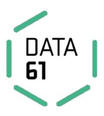
![]()


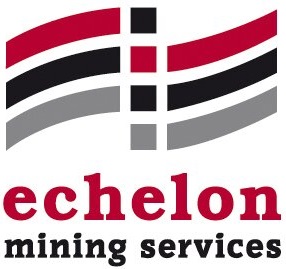
![]()




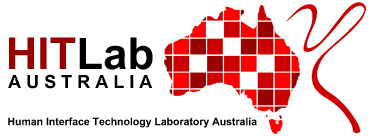

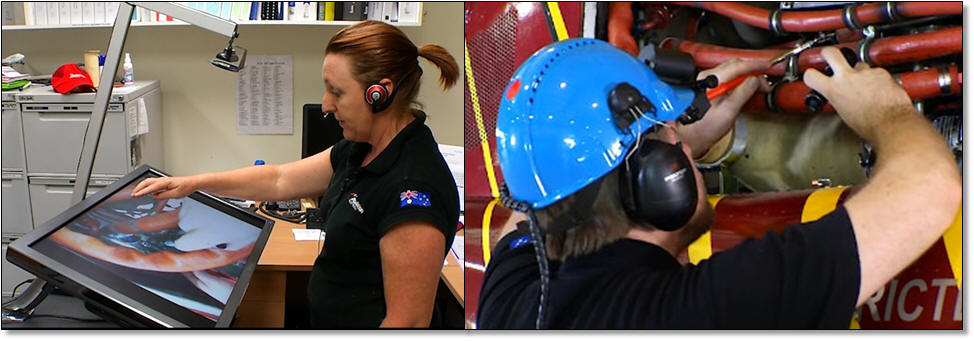
Remote presence for guidance on physical tasks
This project aims to transform remote collaboration on physical tasks. Current systems for remote collaboration on physical tasks are not as effective as working face-to-face. This could be overcome by sharing non-verbal cues, designing systems to account for cultural issues, and using a new model of communication. This project will develop theories and interaction methods for remote guidance based on natural non-verbal communication cues and cultural issues. This project is expected to benefit industries with widely distributed multi-cultural workforces such as mining, defence and medicine.
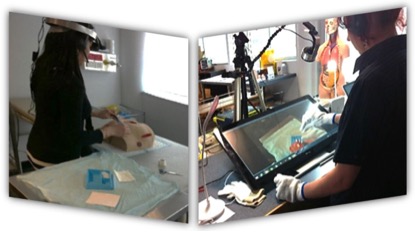
An innovative tele-assistance system to support education in clinical procedures
Access to sound expertise and guidance to perform clinical procedures is often lacking, especially in more rural and isolated areas. In the absence of direct supervision, practitioners and students can feel underprepared and lack the skills and confidence to perform many procedures. This project aims to improve the situation by making remote expertise and guidance more accessible.
In this project, we will trial the application of cutting-edge technology, a "wearable tele-assistance system" that will allow novices to undertake procedures with real-time audio and visual guidance provided by a supervisor at a distant location. This technology enables the instructor's "helping hands" to be visually projected onto site (a patient's wound for example) and allow the novice to shadow the instructor's movements throughout the procedure (if necessary) or allow the instructor to "step-in" should an incorrect action be initiated.
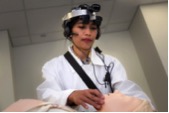
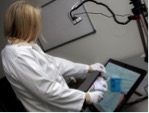
Helping Hands: an innovative tele-assistance system for clinical skill development
The safe and correct performance of clinical procedures is a critical component of the skill set required by health care professionals. The development of competence in this area requires practice and repetition to improve eye-hand coordination and dexterity. Students are taught clinical (practical) skills in a laboratory under direct supervision. This supervision is resource intensive and time-limited. A student may therefore feel underprepared and lack confidence when they are asked to undertake a procedure whilst on placement at a hospital (and on entering the workforce).
This project aims to improve this situation by making remote expertise and guidance more accessible through the application of innovative Augmented Reality technology and wearable devices. The key feature that makes this technology unique is that it supports unmediated remote gestures by augmenting the object of interest with "helping hands". This makes the users feel like they were working side by side although they are physically distributed, thus improving user experience and task performance.

Visual Analytics for Massive Multivariate Networks
Visual analytics for massive multivariate networks. This project aims to create methods to visually analyse massive multivariate networks. The amount of network data available has exploded in recent years: software systems, social networks and biological systems have millions of nodes and billions of edges with multivariate attributes. Their size and complexity makes these data sets hard to exploit. More efficient ways to understand the data are needed. This project will design, implement and evaluate visualisation methods for massive multivariate network data sets. This research is expected to be used by Australian software development, biotechnology and security companies to exploit their data.

Making sense of biology data through artistic interactions
Interactive visualizations that takes advantage of powerful human visual perception system, combined with advances in IT and data science are needed to generate new knowledge and improve medical practice. This project draws on latest research results from the fields of visual arts, visualization, health and education and aims to design and evaluate artistic interaction methods. We define artistic interaction for the first time as a series of dynamic artistic visual representations of data for effectively communicating the transformation of data statuses. It is hypothesized that by introducing artistic interactions, users will be more engaged with the sense-making process, thus making the visualization more effective in conveying the embedded information to the end users, in comparison with traditional reality based interactions.

Use of ambient and eco-visualization for promotion of environmental awareness
Eco-visualizations (EVs) are any kind of interactive devices or pictures made by media artists that are targeted at revealing energy use in order to promote sustainable behaviours or foster positive attitudes towards sustainable practices. Despite much effort in developing various kinds of EVs, their values are mainly appreciated from the artistic perspective. Relatively less attention has been paid to investigating whether and how they fulfill their purposes.
The proposed objectives of the project was to explore this space by 1) designing three different EVs, and 2) examining how these EVs mediate their effect on human energy consumption behaviour.
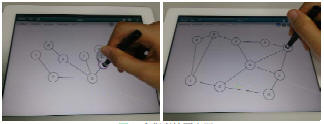
On Aesthetics of User-Sketched Drawings of Symmetric Graphs on Tablet PCs
Previous research focused on the aesthetics of user-sketched graph drawings in which participants rearrange the node positions, given an initial graph drawing. Recent works have provided participants an adjacency list to draw graphs on tablet PCs, because the initial graph drawing would influence participants to sketch a nice drawing. However, these works did not consider the aesthetics of symmetries in their experiments. As a result, this project additionally considers symmetry to analyze the aesthetics of user-sketched graph drawings, in which multiple-stage experiments to verify participants' potential learning ability to sketch symmetrical drawings. Experiment results show that a lot of participants are obviously improved on the learning ability of sketching symmetrical drawings, after executing the former three experiments.
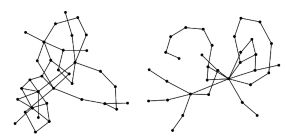
Measuring overall quality of dynamic network visualizations
One of the challenges we face in visualizing dynamic networks is how to maintain visual complexity and overall quality of visualizations at a reasonable and sustainable level so that the information about the network embedded in the visualization can be effectively comprehended by the viewer. Many techniques and algorithms have been proposed and developed to facilitate the discovery of changing patterns. Much research has also been done in investigating how visualization should be constructed to be effective. However, how to measure and compare the quality of visualizations of a changing network at different time points has not been well researched. In this project, we apply an existing multi-dimensional overall quality measure in a user study data of different networks and found that the measured quality is positively correlated with user task performance regardless of network size.
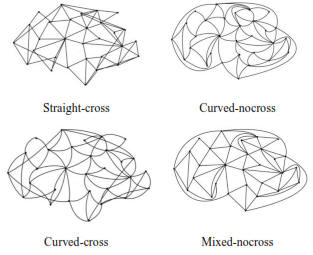
Effects of curves in network visualization
Node-link diagrams have been used to visualize abstract graph data for the purpose of knowledge discovery and knowledge sharing. Although links are often drawn as straight lines, curves has also been used in drawing graphs. Further, despite the wide use of curves for various purposes, the research on to what extent these curves serve their purposes or how effective curves help visualizations covey the embedded information to users is still a topic that requires further exploration.
In an attempt to answer this question, we initiated a project that aims to systematically investigate the pros and cons of curves, and their impact on human graph comprehension in terms of task performance and task execution behavior.
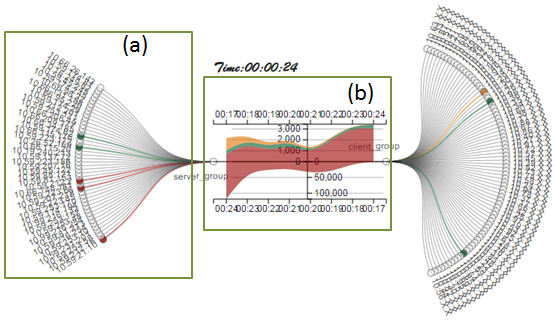
NetflowVis: A Temporal Visualization System for Netflow Logs Analysis
Netflow logs record the interactions between host pairs on both sides of the monitored border, and have got more attention from researchers for security concerns. In this project, we develop a system called NetflowVis to analyze communication patterns and network abnormalities from netflow logs. This system consists of four views, including the communication trajectories view, the traffic line view, the snapshot view and the protocol view, and provides a multilevel analysis architecture for netflow cognition. We will also apply our design in a case study to demonstrate the effectiveness and usefulness of our system.
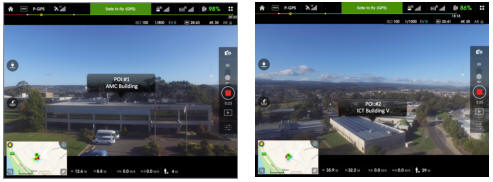
InspectAR: Unmanned Aerial Vehicle with Augmented Reality Technology
In this project, we aim to develop a technology: InspectAR, using Unmanned Aerial Vehicles (UAVs) in inspection scenarios. It is an Augmented Reality (AR) application for mobile devices. It integrates AR technology to enhance the application of UAVs. Although there is existing research on the use of UAVs in different industries such as the agricultural sector, power and utility industries, continued development is worthwhile as AR technology will reduce users' inputs and increase their productivity. A demonstration system is to be implemented to present the concept based on using Global Positioning System (GPS) to automatically display Points of Interest (POI) labels in real-time, and to edit image footage.
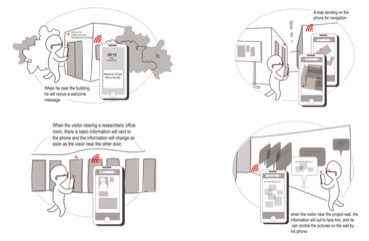
AR Indoor Positioning System
Mobile devices such as smart phones have gained their popularity for the purpose of information acquisition in recent years. In order to provide users with the information in indoor environments, several indoor mobile guiding systems have been developed. Most of the systems focus on how to offer qualified indoor navigation services, mainly based on geographical data and analyses. However, only having a navigation service seems to be insufficient and inefficient. Thus applications aimed at providing comprehensive information for visitors in indoor environments are needed. In this project, we aim to design and evaluate an indoor guiding and positioning system, which not only enables a navigation service but also provides multiple types of information automatically about the indoor environments when users enter an area of the environment. Furthermore, an iPhone application, InSchool, will be developed to evaluate the performance of this designed system to demonstrate the enhancement to positional accuracy of the application.